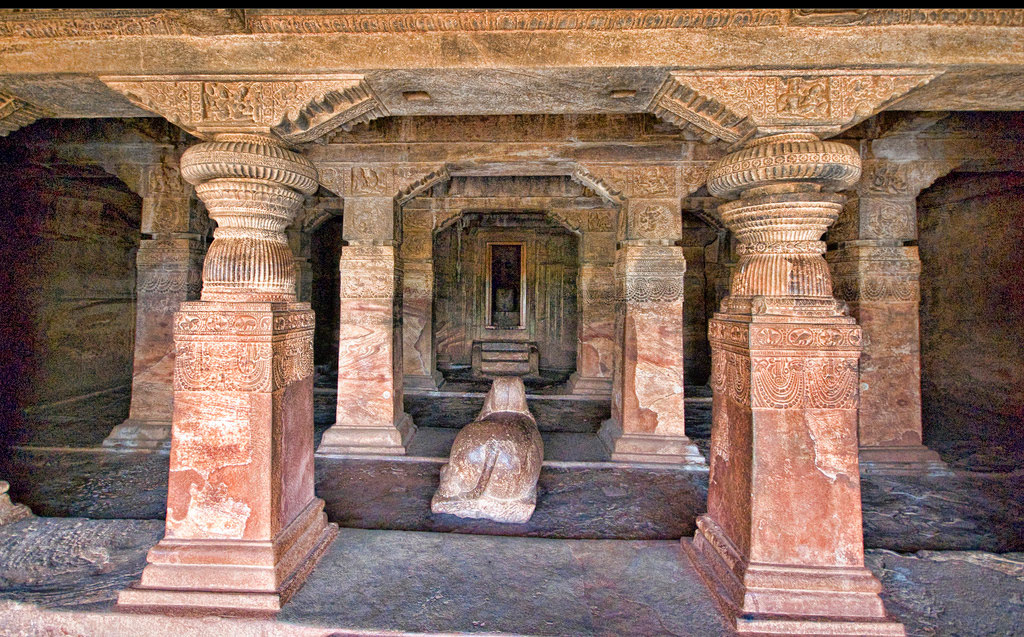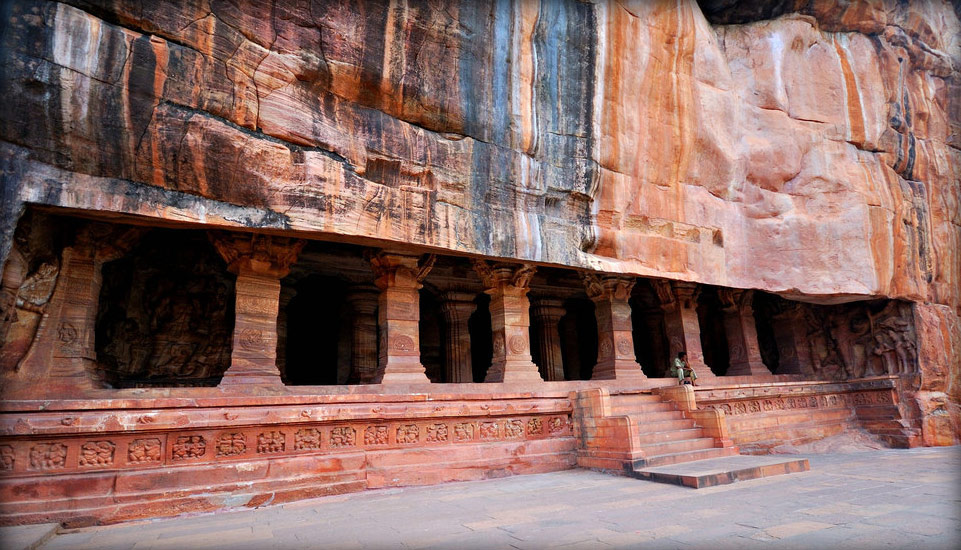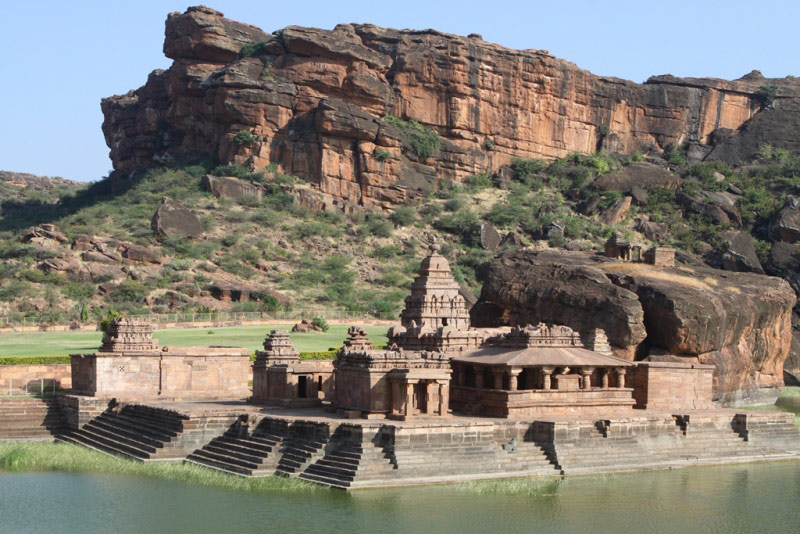Best of India Tours
- Golden Triangle Tour- Best of India & Nepal
- Classical Rajasthan
India Cultural Tours
- Images of North India- Karnataka Heritage
- Rajasthan & Goa Tour
Discover India Tours
- Grand India Tour- North to South India
- Central to South India
Rajasthan Tours
- Classical Rajasthan Tour- Golden Triangle Tour
- Grand Mughal Tour
India Luxury Trains
- Palace on Wheels- The Golden Chariot
- India Deccan Odyssey
- The Indian Maharaja
- Royal Rajasthan on Wheels
Nepal Tours
- Glimpses of Nepal- Buddhist Pilgrimage
- Nepal River Rafting
- Destinations of Nepal
- Nepal General Info
India Wildlife Tours
- North India Wild Life- South India Wildlife
Tibet Tours
- Tibet Monastery Tours- Explore Tibet
- Destinations of Tibet
Spa & Yoga Tours
- Ananda in Himalayas- Yoga & Meditation
Adventure Tours
- Manali Safari Tour- Himalayan Trekking
- Horse Safari
Badami
Aihole
![]() Badami
Badami
![]() Bangalore
Bangalore
![]() Belur
Belur
![]() Bijapur
Bijapur
![]() Coorg
Coorg
![]() Halebid
Halebid
![]() Hampi
Hampi
![]() Hassan
Hassan
![]() Hospet
Hospet
![]() Mysore
Mysore
![]() Nagarhole
Nagarhole

Capital of the ancient South Indian Kingdom of the Chalukyas, Badami is situated in North Karnataka near a beautiful red sandstone ridge. Formerly known as Vatapi, the city was founded in AD 543 by Pulkeshin I, the great lion king. It remained their capital till AD 757 and it was in this period that Badami, along with Aihole and Pattadakal, became a centre of rock-cut temples. The architectural splendours of Badami later influenced many new architectural and sculpting traditions. The Chalukyan Empire was overthrown by the Rashtrakutas in the 8th century and in the next few hundred years the region saw anarchy, chaos, and destruction.
The place lost its importance and with it any new addition.Badami has a pleasant climate with cool and dry winter from November through February. Most of the rainfall occurs during June and July, the months of south-western monsoon.
Sightseeing
Badami, more than anything else, is known for its rock-cut cave temples. Numbering five, these temples are over thirteen hundred years old. They have been carved out of the red sandstone hills surrounding Badami. Two temples are dedicated to Vishnu, while one is dedicated to Shiva, and other two are related to Jainism and Buddhism. Apart from rock-cut temples, the town also has some other temples and a beautiful tank. Lord Shiva is worshipped as the God of Souls in the Bhootnath Temple. The Agastyatirtha Tank is a beautiful water body considered as holy by the pilgrims. The Archaeological Museum has a good collection of objects from Badami as well as Aihole and Pattadakal. Jambulinga Temple is one of the oldest temples in Badami dedicated to the Trinity of Brahma, Vishnu, and Mahesh (Shiva). Finally, the Badami Fort is a good place to view the entire Badami ruins.
Excursions
Being a region steeped in history, the vicinity of Badami offers a plethora of attractions to the touirists. Pattadakal was the second capital of the mighty Chalukyans and a place that hosted important state functions of the time. Aihole, situated some 46 km off Badami, was another architectural centre of the Chalukyas. There are a number of Hindu temples constructed in the 6th and 7th centuries. The Mahakuta Temple, situated around 14 km from Badami, is a well-known place of worship. On the way to Mahakuta from Badami, the Naganath Temple is about 10 km east of Badami. The Banashankari Temple, situated some 50 km off Badami, is dedicated to Banashankari, a form of Goddess Parvati.
Excursions for Badami
The First Cave
Constructed in the 6th century, this cave is dedicated to Lord Shiva. Of particular interest here is the image of Shiva with 18 arms. Shiva is depicted here in his destroyer form with all his paraphernalia like damru (a musical instrument associated with Lord Shiva, a dumbbell), the cobra, and a trishul (trident). The first cave is a Shiva Temple of the 6th century AD. Other important figures to be found here are of Ardhnarishwara (a concept in the Hindu mythology where at times Lord Shiva and Mother Goddess Parvati are personified as one), Harihara (another important concept in Hindu mythology where Lord Shiva and Lord Vishnu are personified as one), and Nandi (the bull).

The Second Cave

This cave is dedicated to Lord Vishnu (the protector in Hindu mythology). King Kirtivarman I, who ascended the throne in AD 567, ordered the carving of this temple before AD 578. Vishnu has been depicted as two of his 10 incarnations, the dwarf (Vaman) and the boar (Varaha). Apart from these two interesting images of Vishnu, there are images of pot-bellied dwarfs, swastikas, Gandharva couples, Trivikrama (one of the incarnations of Vishnu), and Lord Vishnu riding a Garuda
The Third Cave
This is the most impressive of all the cave temples in Badami. The temple has 61 steps. It was built by Mangalesh, who is considered the father of Chalukyan School of art. The artisans who worked on the varied designs of the pillars took great artistic freedom. Though the temple is dedicated to Lord Vishnu, there are images of Lord Shiva, Indra, and Lord Brahma on the ceiling. Lord Vishnu has been depicted in different aspects like sitting on a coil of snakes and in his Boar (Varaha) incarnation.

The Fourth Cave

The date of creation of the fourth cave is hotly debated and no one is certain when it was carved. However, most of the art historians are unanimous that this is the most recent of all the rock-cut temples in Badami. This is the only cave related to the Jains, a religion the Chalukyans gave royal patronage. The temple has images of different Jain tirthankaras like Adinath (the first Jain tirthankara), Suparshavanath (the seventh tirthankara), and about 20 other tirthankaras. As in most other Jain cave temples, there are two images of dwarapalas (gate keepers) at the entrance.
The Fifth Cave
The only natural cave out of all the rock-cut caves in Badami, it is dedicated to Lord Buddha. However, it has to be remembered that architectural expression of most of the caves are almost equal; none of them is distinctly Hindu, Buddhist, or Jain though they may have been dedicated to different sects.

Agastyatirtha Tank

Agastyatirtha Tank is situated near the rock-cut cave temples of Badami. You can have a glimpse of this tank from the cliffs near the caves. It is a sacred tank and, according to the local beliefs, its water can cure illnesses.
Bhootnath Temple
Bhootnath is a distinct form of Lord Shiva considered as the God of souls, spirits, and ghosts. The dark sanctuary of the temple has an image of Shiva in an irate mood. The temple is situated not far away from the Agastyatirtha Tank.

Archaeological Museum

One of the most important of this museum\’s possession is a model of the natural bridge of Sidilinapadi, which is located some 5 km from Badami. Another interesting exhibit is the images of Lajja-Gauri—a fertility cult that was widely practised in this region during Chalukyan times. The museum is also situated near the Agastyatirtha Tank.
Jambulinga Temple
Hidden by the tall buildings in the centre of Badami, the Jambulinga Temple was constructed in AD 699, according to the inscription here. The temple has three chapels that are dedicated to Lord, Brahma, Vishnu, and Mahesh (Shiva).

Badami Fort

The fort of Badami was once the pride of the Chalukyan Empire, but today it is mostly in ruins. The fort is the best place to have a bird\’s eye view of Badami. From here, you can see the ruins of a treasury, a watchtower, and large granaries. The fort also houses the Shivalaya (the temple of Shiva), now mostly in ruins. The temple has many friezes and sculptures depicting the legends of Krishna.
Aihole
Along with Badami and Pattadakal, Aihole completes the third dimension of Chalukyan architectural centres. Situated some 129 km off Bijapur, the place had an important position during the rule of the Chalukyas. There are a number of richly carved Hindu temples constructed in the 6th and 7th centuries. Some of the important temples of Aihole are Lad Khan Temple, the Meguti Temple, and the Durga Temple. There is also a small museum run by the archaeological department that showcases objects found in Aihole, mostly of the Chalukyan era.

Banashankari

Situated some 50 km off Badami, the temple of Banashankari is dedicated to Banashankari or Shakambari, a form of Goddess Parvati. The original temple was built by the Chalukyas of Kalyan, but the present structure was built in the 17th century. The temple reflects the Dravidian style of architecture.
Mahakuta Temple
The Mahakuta Temple is situated around 14 km from Badami and is a well-known place of worship. The architecture of the temple has visible influence of both northern as well as southern styles.

Pattadakal

Pattadakal was the second capital of the mighty Chalukyans. It is a place which hosted most of the important state functions at that time. Along with Badami and Aihole, Pattadakal is also a centre of Chalukyan architectural extravaganza. There are many temples here, mostly dating back to 6th and 7th centuries AD. Some of the important temples are of the Virupaksha Temple, Mallikarjuna Temple, and the Papanatha Temple. Pattadakal is situated some 20 km from Badami.
The Naganath Temple
Around 10 km east of Badami on the way to Mahakuta, the Naganath Temple dates back to the Chalukyan times. The temple is dedicated to Lord Shiva.

Fact File
 Area: 3.32 sq. km
Area: 3.32 sq. km
 Population:19,982 (1991)
Population:19,982 (1991)
 Altitude: 177 m above the sea level
Altitude: 177 m above the sea level
 Best Time to Visit: October to February
Best Time to Visit: October to February
 Languages:Kannada and English
Languages:Kannada and English
 STD Code: 08357
STD Code: 08357




